Issue #98, Volume #2


It Won’t Be Built By The Big Five Defense Primes
This is Porter’s Daily Journal, a free e-letter from Porter & Co. that provides unfiltered insights on markets, the economy, and life to help readers become better investors. It includes weekday editions and two weekend editions… and is free to all subscribers.
Editor’s note: Erez will be sitting down with Porter this Wednesday for a timely analysis of a little-known company the two of them describe as one of the most asymmetric of their careers.
What they’ve uncovered is the rare type of asymmetric investment that usually only gets recognized after the big money has been made. But not this time… this time they’ve identified it early.
Click here to be part of the conversation and listen to them discuss this opportunity and the future of Biotech Frontiers.
| Ukraine’s low-budget mission with a billion-dollar kill… Modern warfare and the economics of asymmetry… Stealth bombers cost $2 billion each… Drones cost thousands… Anduril Industries is a U.S. leader in drones… Delinquencies are on the rise… People think unemployment will jump… |
On a frigid dawn over Russia’s heartland less than 90 days ago, the old calculus of military power collapsed.
It didn’t happen through a clash of conventional tanks or fighter jets, nor through the deployment of futuristic, next-generation hypersonic weapons that Russian President Vladimir Putin has touted. It didn’t involve a Hollywood-style commando raid of the kind that has lionized SEAL Team Six.
Instead, on that cold morning, Ukraine’s special intelligence services launched Operation Spider’s Web, sending a swarm of remote-controlled, unmanned drones – small, inexpensive, and disposable – deep into Russian territory. The drones destroyed over 40 of Russia’s most prized strategic aircraft and wreaked havoc at four military bases so far inside Russia that Putin’s top brass had regarded them as untouchable. For the first time in modern warfare, a nation’s most advanced defenses and weapons were rendered porous not by greater firepower, but by the economics of asymmetry.
Historians may one day mark this day – June 1, 2025 – as the moment the nature of warfare changed. As University of Pennsylvania Professor Michael Horowitz has written, the future belongs to “weapons of precise mass” – systems that combine surgical accuracy with cheap ubiquity. Operation Spider’s Web offered a live demonstration: drones that cost Ukraine perhaps tens of thousands of dollars pinpointed, overwhelmed, and destroyed advanced Russian assets worth billions. This is the logic of disruption applied to the battlefield.
The strategic significance of Operation Spider’s Web is hard to overstate: By puncturing the illusion of invulnerability that military assets deep inside Russia had enjoyed, Ukraine showed how technological leverage can invert the balance of power. Nations that once relied on the most expensive, sophisticated weaponry for their security must now grapple with a world where a decisive edge may come from networks of cheap, smart weapons. Spider’s Web wasn’t just a successful raid – it was the moment war itself tilted on its axis.
It’s a safe bet that the raid caught the Pentagon’s attention. America’s most advanced bomber – the B-2 Spirit, also known as the “Stealth” bomber – costs $2 billion per plane to manufacture. With the ability to fly undetected anywhere in the world and drop conventional or nuclear bombs, the B-2 undoubtedly gives the United States the capacity to project global power. But the plane is so expensive, the U.S. has only 19 B-2’s in its entire fleet, all of them housed at Whiteman Air Force Base in Missouri.
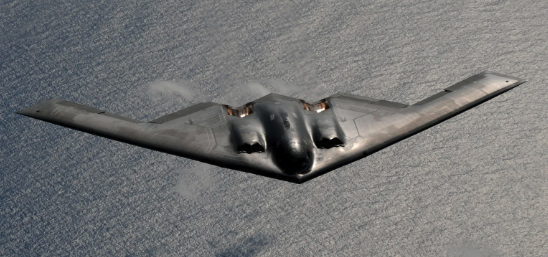
So the obvious question is: If Ukraine could stun Russia by flying a swarm of cheap drones deep into Russian territory and destroy 40 of Russia’s prized strategic aircraft at four heavily fortified bases… what’s to stop America’s enemies – states such as China, Russia, or Iran, or terrorists such as the 9/11 hijackers – from pulling off a similar stunt somewhere like Whiteman Air Force Base? Destroying or damaging even a single, $2 billion B-2 with modified drones bought at Walmart would crack the U.S.’s sense of invulnerability in an instant. America’s defense planners did not have to contemplate this type of scenario until recently. But they do now.
In his magisterial book The Shield of Achilles, historian Philip Bobbitt shows how new forms of war create new forms of political power. The longbow, artillery, and nuclear weapons weren’t only new technologies of violence – they also fundamentally reshaped who held political power and how they wielded it. So it is with the new era of drone warfare.
We are already seeing proof of this phenomenon, as the Houthis in Yemen – who aren’t even a state, but instead a regional Islamist militia – have fought the U.S. Navy and Israel’s military to a standstill in the Red Sea by relying on drone-based strategies like Ukraine’s attack on Russia. President Donald Trump recently described America’s military as “the strongest the world has ever seen,” but deploying two $13 billion Gerald R. Ford-class nuclear-powered aircraft carriers to the Persian Gulf hasn’t stopped the ragtag Houthis from grinding Red Sea commercial shipping traffic to a halt with Walmart drone tactics.
Of course, the new era of drone warfare also has implications for investors. Defense is a big business: the United States spent nearly $1 trillion on defense in 2024. The Big Five prime defense contractors – Raytheon (RTX), Lockheed Martin (LMT), Boeing (BA), General Dynamics (GD), and Northrop Grumman (NOC) – have a combined market capitalization of nearly $600 billion. How many of the Big Five make the low-cost, expendable drones that dominate today’s battlefields in places like Ukraine and the Red Sea? Not one of them.
One country that doesn’t face this problem is China. Privately held Chinese firm DJI (the acronym stands for Da-Jiang Innovations) commands 90% of the U.S. consumer drone market and 80% globally. Harnessing the manufacturing prowess of DJI and 2,000 other Chinese companies that specialize in low-cost drones, the People’s Liberation Army is quietly building the world’s largest, most advanced military drone fleet. Because it controls vast swaths of the globe’s drone supply chain and dominates critical adjacent areas such as battery manufacturing, China holds a distinct edge in crafting cheaper, more abundant drones over the U.S. or any other country.
Unless the United States is willing to accept being a second-rate power to China in this new era of drone warfare, it is going to have to play catch up. To whom will the Pentagon turn to help close the gap? Will it be one of the Big Five such as Northrop, which took two decades to develop the B-2 bomber, and delivered it at $1 billion over budget?
I think it’s far more likely that the Pentagon will rely on a new generation of companies such Anduril Industries, the upstart privately held defense supplier founded in 2017 by 25-year-old entrepreneur Palmer Luckey (pictured below with Anduril’s Roadrunner drone). Videogame aficionados may remember Luckey as the creator of the Oculus VR headset, which he sold to Facebook (now Meta) for $2 billion in 2014. Luckey has brought the same creativity, nimbleness, and speed of execution to Anduril that he did to Oculus, one of the best Silicon Valley start-ups.
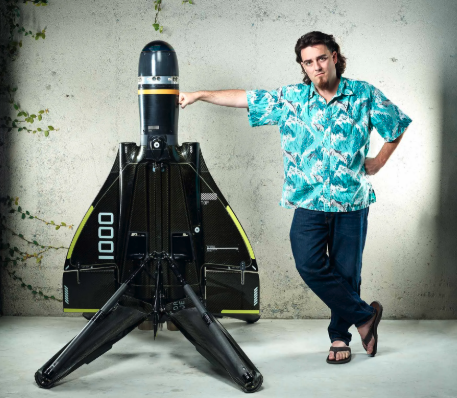
But Anduril is only one of the “winners” from the emerging new paradigm of drone-based war. There are others.
Nearly two years ago, Porter invited me to launch a newsletter focused on the coolest, most promising innovations in biotech. I’ve tap-danced to work writing Biotech Frontiers, and our subscribers know that we’ve done pretty well. Biotech Frontiers has made more than seven recommendations that gained 100% or more during the past 18 months.
As Porter and I sat down to re-visit Biotech Frontiers recently, we agreed that the changes in technology beyond biotech are too important to ignore. Artificial intelligence, blockchain, drones, and robotics are only a few of the domains that stand to transform the basic building blocks of society: how we work, how we transact, how we fight wars… in short, how we live.
If you’re interested in these themes – and, to paraphrase one of my favorite bands, The Who, “You better” be – I hope you’ll join us as Biotech Frontiers expands to new frontiers. See you in those pages.
Erez Kalir
Berkeley, California
Pre-IPO Alert: The Next Tech Giant
Matt Milner just revealed how to grab a stake in the company behind ChatGPT before it hits the stock market.
He believes it’s racing toward a $1 trillion valuation — with explosive growth potential rivaling Google, Facebook, and Uber’s early investors.
⏳ Opportunities like this come once in a generation. Don’t miss out.
Click here to watch Matt’s full reveal and learn how to position yourself today.
Three Things To Know Before We Go…
1. Labor market flashes warning signs. The percentage of Americans expecting higher unemployment over the next year has surged to 62% – up from just over 30% this time last year, and the highest reading since the depths of the 2008 financial crisis. Historically, readings this high have only been seen during recessions.
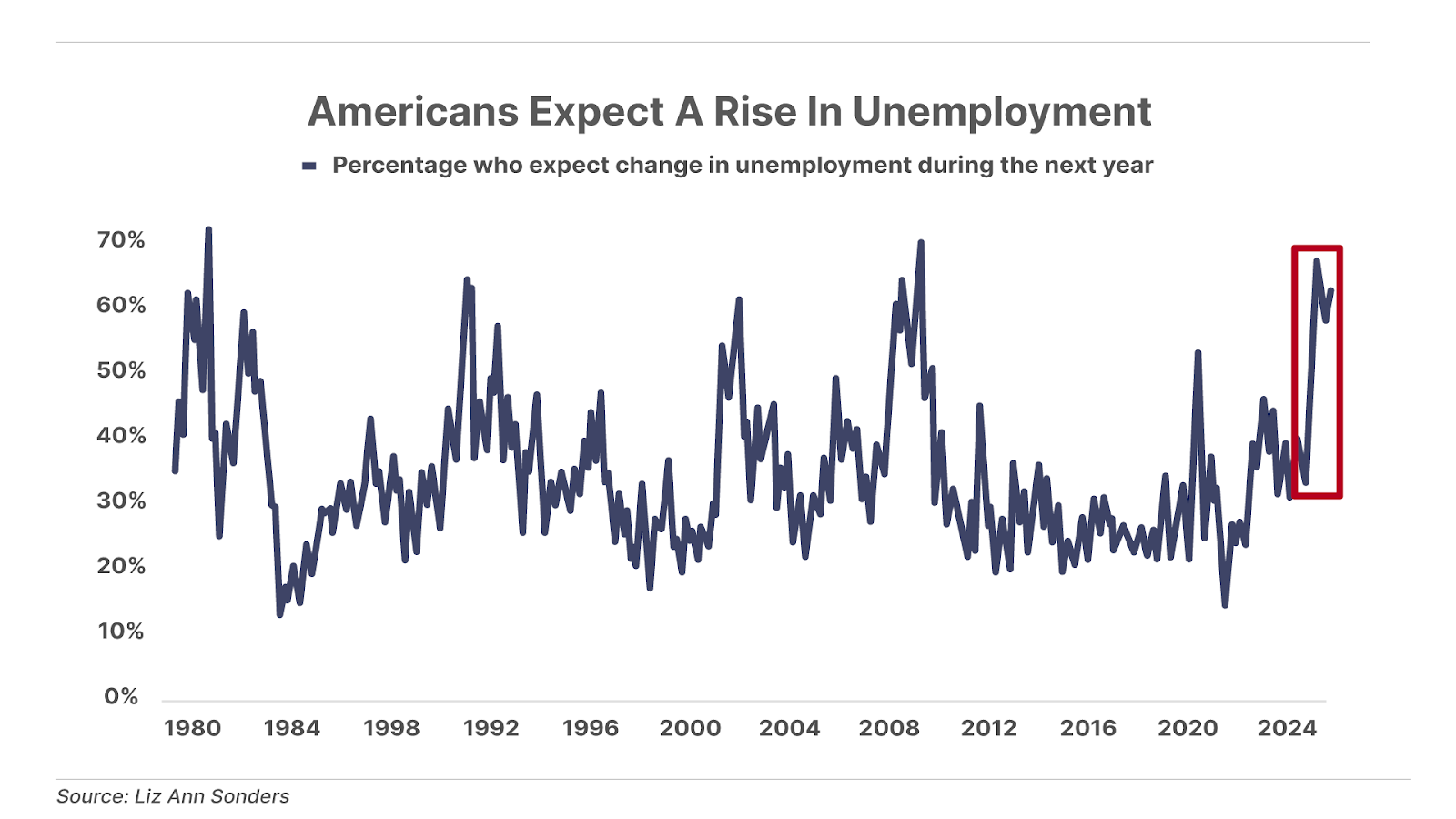
2. Delinquencies are rising. Credit card delinquencies just surged to 12.3% – the highest level since the Global Financial Crisis. With student loan repayment collections resuming, those delinquencies have also jumped to 10% and are poised to climb further as borrowers struggle with outdated terms or refuse to pay after nearly three years of forbearance. Auto loans are showing similar strain, with delinquencies near 5%, a 14-year high. Rising delinquencies signal that consumers are under mounting financial pressure.
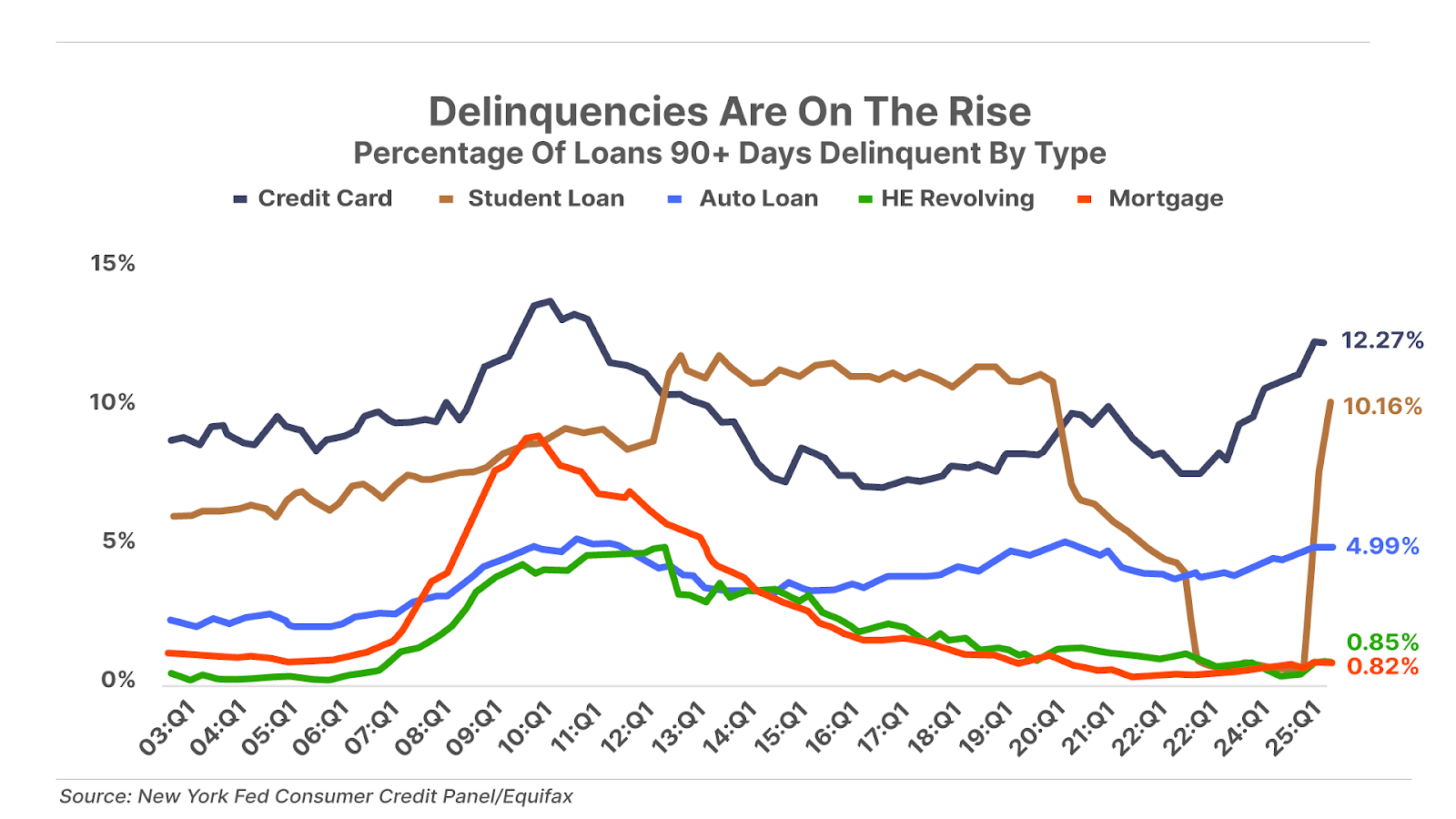
3. The U.S. government owns a permanent stake in a public company. On Friday, the White House announced it is taking a 10% stake in U.S. chipmaker Intel (INTC) worth around $8.9 billion. The news was seen as a positive for the troubled company, whose shares are up more than 6% since the deal was announced. However, it creates a dangerous precedent. While the Trump administration has said the government won’t involve itself in company operations, the move opens the door for such involvement by this administration or another in the future. And as Republican U.S. Senator Rand Paul noted, “Socialism is literally government control of the means of production… Today, it’s Intel, tomorrow it could be any industry.” Perhaps more telling, Paul’s self-described socialist colleague Senator Bernie Sanders openly praised the move and urged the administration to go even further.
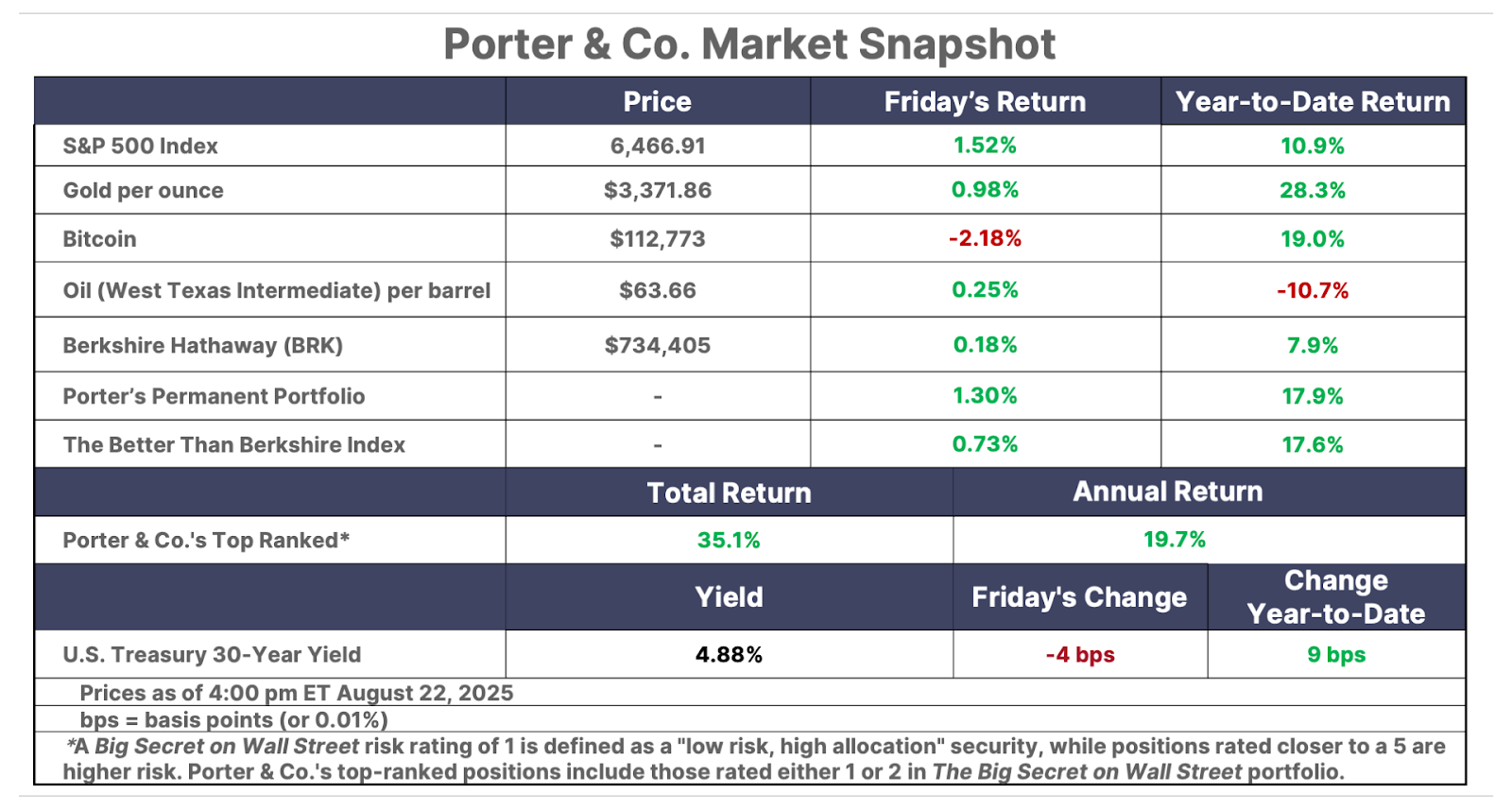
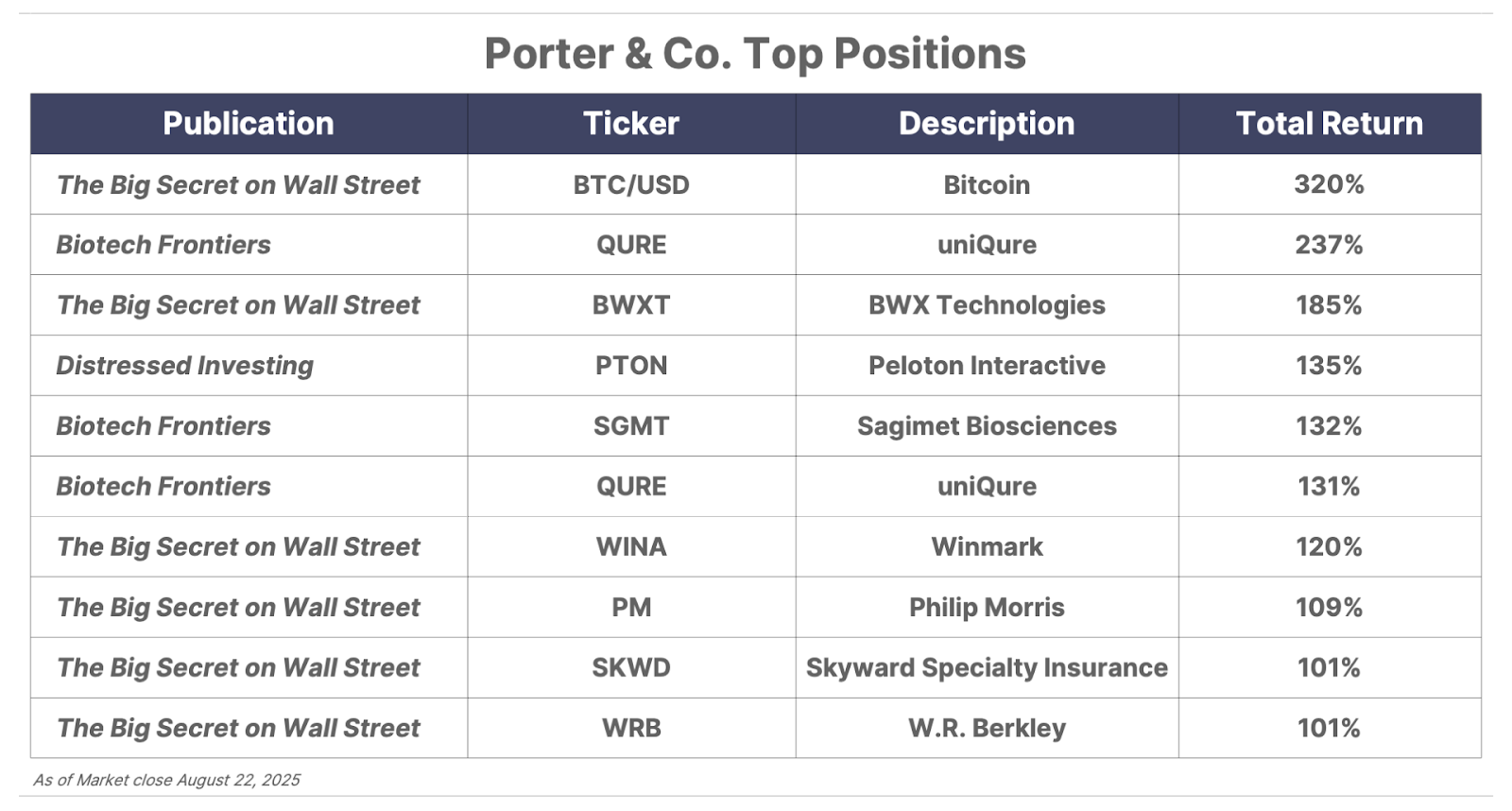
Please note: The investments in our “Porter & Co. Top Positions” should not be considered current recommendations. These positions are the best performers across our publications – and the securities listed may (or may not) be above the current buy-up-to price. To learn more, visit the current portfolio page of the relevant service, here. To gain access or to learn more about our current portfolios, call Lance James, our Director of Customer Care, at 888-610-8895 or internationally at +1 443-815-4447.
